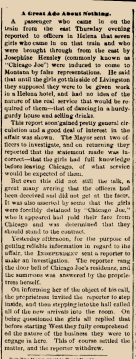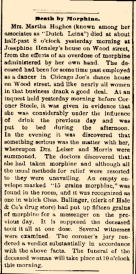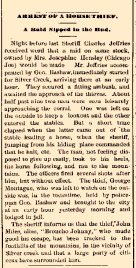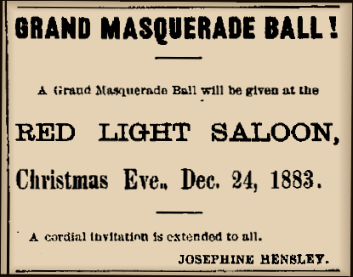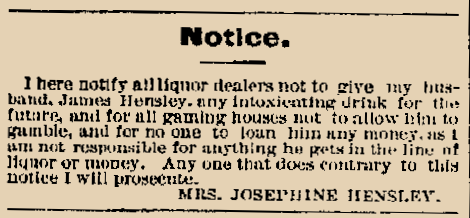|
|
|
|

| THE
PIONEER CABIN - REEDER'S
ALLEY • BRIDGE STREET
•
1870s STEREOSCOPE VIEWS
• 1880s VIEWS OF STATE STREET AND CATHOLIC HILL •
MADAMS JOSEPHINE HENSELY & BELLE CRAFTON •
VIEWS OF BROADWAY •
THE LEWIS & CLARK COUNTY COURT HOUSE •
FOIDEL UNDERTAKING COMPANY BUILDING
• 1935 EARTHQUAKE DAMAGE •
1970s URBAN RENEWAL DEMOLITION •
TME-LAPSE ANIMATION OF SOUTH MAIN
• |
|
The area
south of Broadway that came to be known as "South Main"
was the birthplace of Helena. It was there that gold was discovered
in 1864, and where the development of the city began. It may
be said that the area retained much of its frontier character
long after the rest of the city was more or less civilized.
By
the mid-20th Century, "South Main" had become synonymous
with "Dangerous Underclass", and was generally regarded
as an area to avoid -- unless one wanted good Chinese food,
of course. Then, setting a cautious foot onto the northern edge
of South Main to visit the House of Wong or the Yat Son Noodle
Parlor seemed worth the risk.
For all
its risks, real and imagined, the area retained much of Helena's
history within its confines.
The Urban Renewal Plan (some might say Debacle) of the 1970s
displaced a number of lower-income families, destroyed whatever
community was there, and demolished most of the Victorian-era
structures in the area. In total, 228 buildings were demolished,
over 140 businesses were displaced, and 430 familes had to find
somewhere else to live.
Insipid
1970s government buildings were erected in the center of the
historic district, including a new Federal Building, which the
Feds have since abandoned for a newer, bigger one in the Great
Northern Town Center.
|
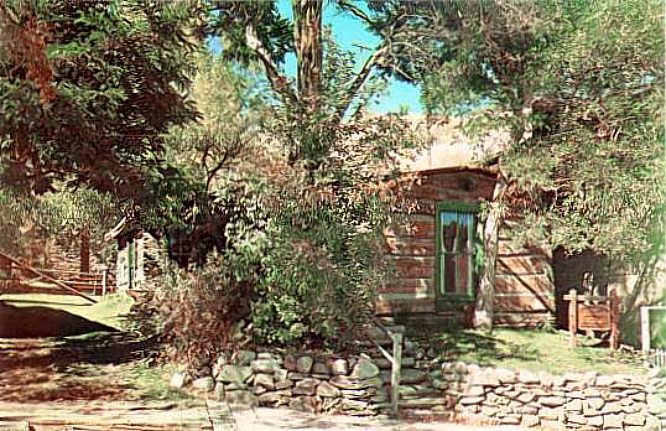
| The oldest
structure still standing in Helena, the Pioneer Cabin, Reeder's
Alley at Park Ave. It was built on a gold claim by Wilson Butts
in 1864-65. |
|
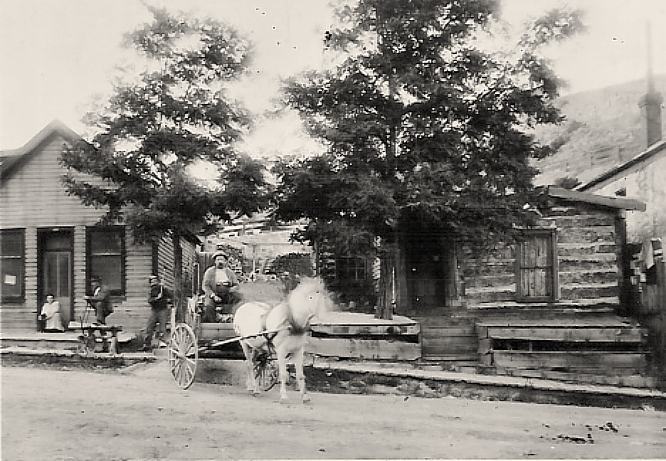
| The Pioneer
Cabin, 1904. Shown is George Mitchell, who then owned the
cabin and operated a wood lot in the rear. |
|
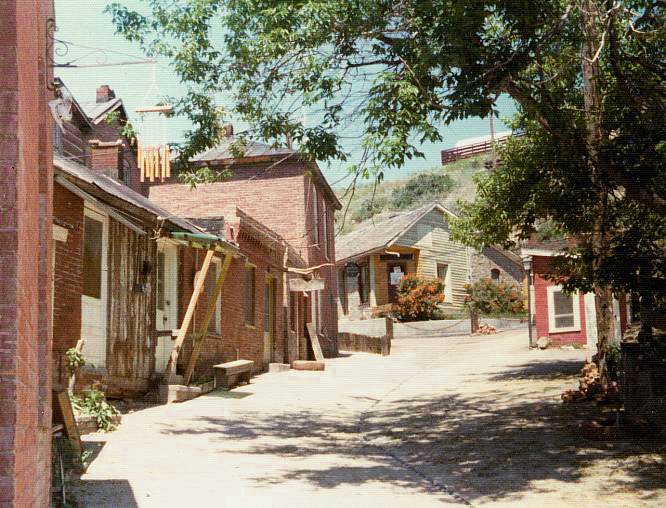
| Reeder's
Alley, 1970s. Once housing for miners, once a would-be art
colony, Reeder's Alley has seen many changes over the past 140
years. Today, it houses a variety of business and offices. It
has been owned by the State of Montana since 2000. COLLECTION
OF KENNON BAIRD |
|
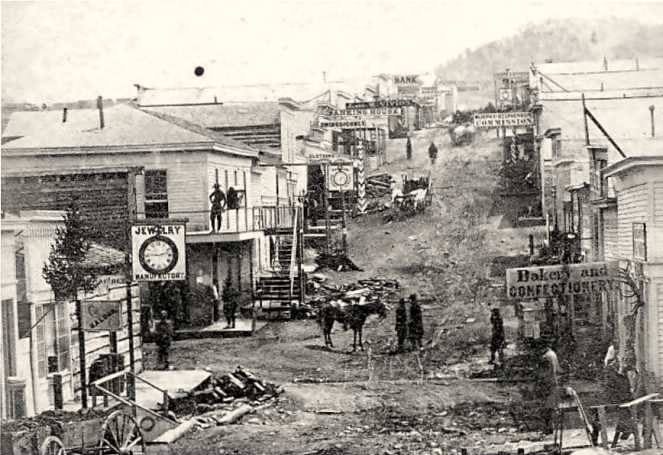
| Bridge
Street, 1860s, looking east from the Gulch. By the 1970s,
this was the heart of Helena's red-light district. Bridge St.
was renamed State St. in 1889. |
|
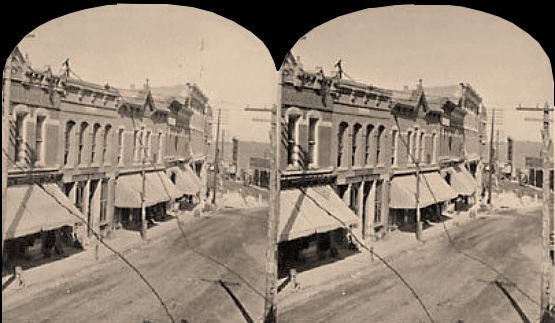
| Stereoview
of Main St. (Last Chance Gulch) 1878. Note:
You can see such images in 3-D without the use of a viewer by
unfocusing your eyes as you may have done for the popular "Magic
Eye" posters. |
|
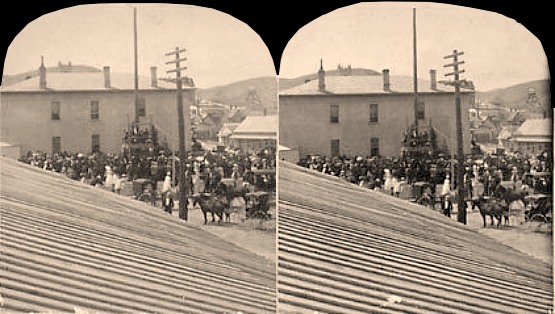
| Stereoview
of a Fourth of July speakers' platform and assembled crowd,
ca. 1875. On the hillside in the background can be seen the fire
tower lookout. |
|
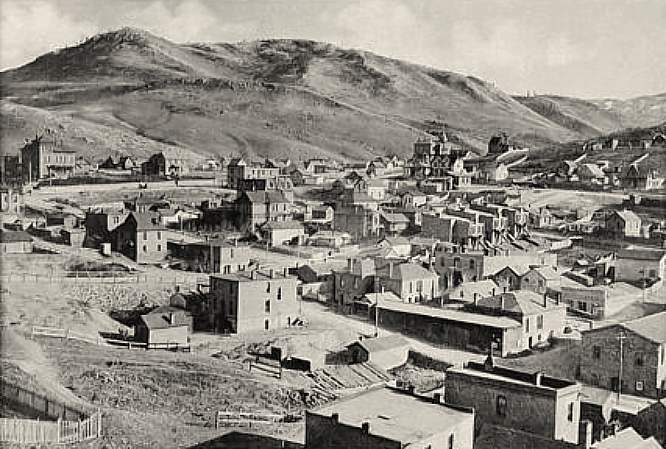
| State
Street area, looking southeast, one late afternoon in the
1880s. A lovely view, but one wonders where all the people are.
|
|
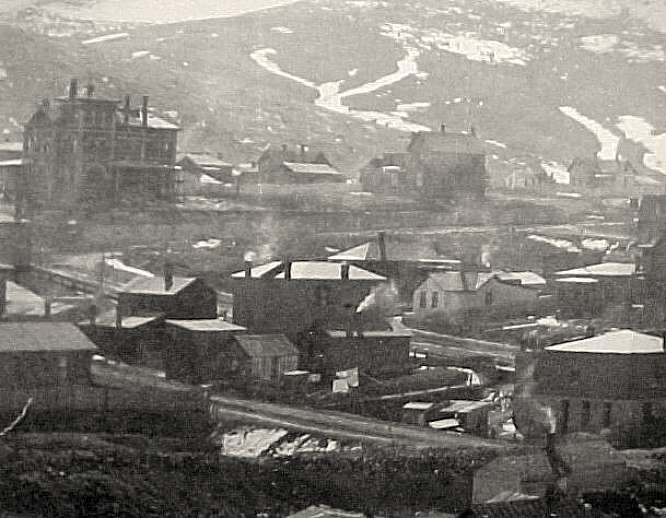
| A
view similar to the preceeding one, taken in 1889. A haze
of winter wood and coal smoke hangs over the city. The large home
at the top left was owned at different times by two pioneer Helena
merchants, A. G. Clarke and H. M. Parchen. |
|
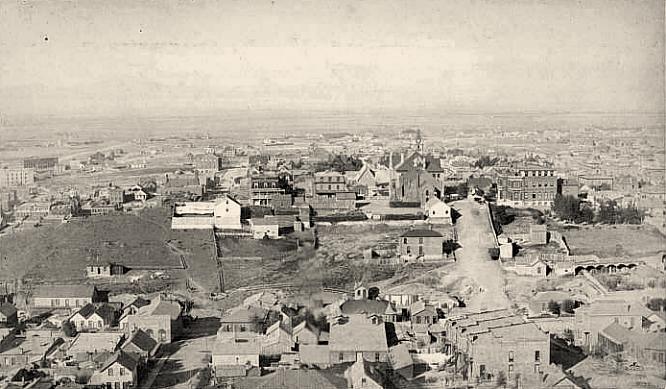
| "Catholic
Hill", looking north across State St., ca. 1885. The
large building on the right is St. Vincent's Academy, a Catholic
school. Across S. Ewing St., to the left, is the first St. John's
Hospital. |
|

HELENA'S RED
LIGHT DISTRICT
•
MADAMS JOSEPHINE ""CHICAGO JOE"" HENSLEY &
BELLE "CRAZY BELLE" CRAFTON•
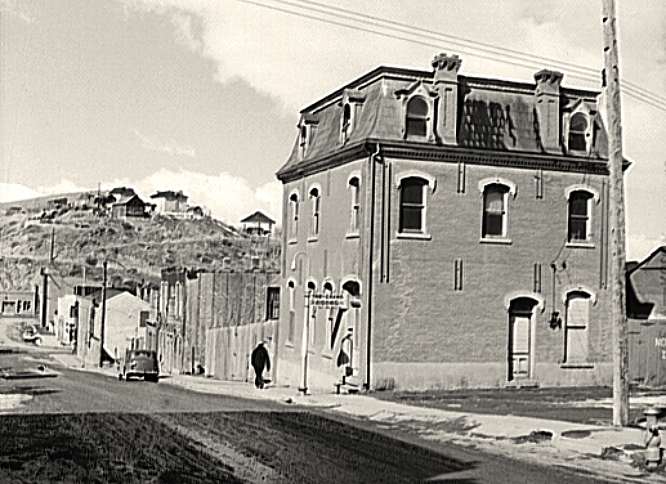
|
The Grand,
at the corner of State and Joliet, shown in 1942. During
the gold-rush era, it was owned by Josephine "Chicago
Jo" Hensley, and was likely a brothel. Hensley also
owned the Red Light Saloon, the Coliseum variety theater, and
had other commercial interests in the Helena area, including
stock-raising.
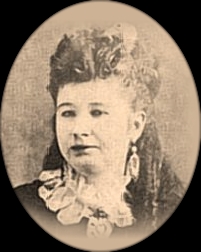
Josephine Hensley
|
Bozeman
historian B. Derek Strahn, writing for the website
"Distictly
Montana", gives us the lowdown on Chicago Joe
and two other successful Helena prostutute/madams:
Mirroring
Helena’s prosperous aura was its extensive red light
district, which flourished between Wood and Bridge Streets.
Initially, a number of “proprietor prostitutes”
working alone out of small houses that they owned, defined
the district. By the 1880s, however, a few increasingly
powerful madams consolidated ownership of the tenderloin,
erecting several large parlors and colorful bawdy houses.
By 1886, no less than 52 white prostitutes worked in Helena’s
demimonde, which for more than 20 years had constituted
the town’s largest single source of women’s
employment outside of the home.
One
of the most prominent madams in Helena during this time
was Josephine Airey “Chicago Joe” Hensley
who, beginning in 1871, shrewdly manipulated a series
of business deals to become “the queen of the city’s
red light district.” Mortgaging everything, including
“three dozen pair of underclothes,” she rapidly
became the largest landowner on Wood Street. At the peak
of her success, “Chicago Joe” had invested more
than $30,000 to erect the Coliseum, a vaudevillian variety
theater, and other sizable building projects. But the
nationwide Panic of 1893 found her financially overextended,
and virtually all of her property ultimately transferred
to others. She died of pneumonia a few years later at
the age of 56.
|
• •
•
BELLE
"CRAZY BELLE" CRAFTON
AKA MOLLIE BYRNES, AKA MOLLIE WEINSHEIMER
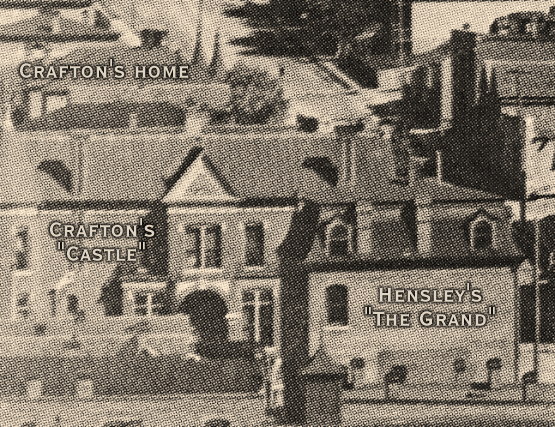
Looking
east up State Street, ca. 1890.
Mr. Strahn's article continues...
|
Mollie
“Crazy Belle Crafton” Byrnes was another
significant player in Helena’s red light distirct.
Born in New Orleans, Byrnes settled in Helena in 1881
and set up operations in the heart of the demimonde. By
May of 1884, she secured the old Kiyus Saloon property,
while renting several other residential properties in
other parts of the city. Two years later she financed
the construction of a grand, $12,000 bordello that soon
became known as “the castle.” By 1899, Byrnes
sold her flagship property to a local hotel owner. When
she died of acute alcoholism a year later, her estate
was valued at $20,000 cash in real and personal property.
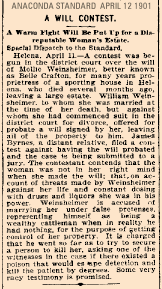
|
A
1901 Anaconda Standard article on the legal
battle over Belle Craftons' estate.
CLICK TO ENLARGE
|
•
• •
Another
successful Helena prostitute was Louisa Couselle
who, like Hensley and Byrnes, regularly bought and sold
property while extending mortgages to others. Sensing
opportunity in uncharted waters, Couselle soon relocated
to Bozeman, where competition was virtually non-existent.
With impressive financial resources at her disposal, Couselle
purchased a total of 15 lots, laying the foundation for
a rapidly-growing tenderloin that would flourish one half
block north of Main Street between North Rouse and North
Bozeman Avenues. The
enterprise was very profitable, and by 1878, Couselle
was of greater economic means than roughly 95 percent
of Bozeman’s citizens. Her stature was so impressive
that The Avant Courier Annual Almanac listed her as one
of the 59 “heavy taxpayers of Gallatin County.
|
The
tradition of South Main brothels continued until 1973, when
the establishment of the legendary Dorothy Baker was
closed down. The well-trod entrance to "Dorothy's
Rooms" was on Jackson St.
MANY
THANKS TO PROF. PAULA
PETRIK, ASSOCIATE DIRECTOR OF THE CENTER FOR HISTORY &
NEW MEDIA AT GEORGE MASON UNIVERSITY, FOR HER VALUABLE INPUT
AND KIND ASSISTANCE. PROF. PETRIK IS THE AUTHOR OF "NO
STEP BACKWARD: WOMEN AND FAMILY ON THE ROCKY MOUNTAIN MINING
FRONTIER, HELENA, MONTANA, 1865-1900"
|
|

VIEWS OF BROADWAY
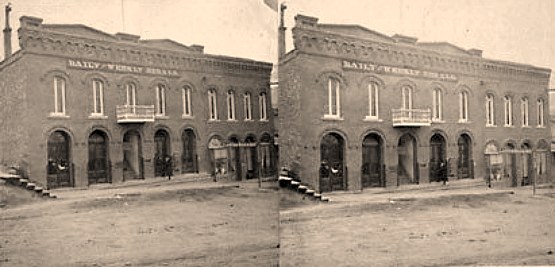
|
Stereoview
of the Daily and Weekly Herald building, on Broadway, ca.
1875.
|
|
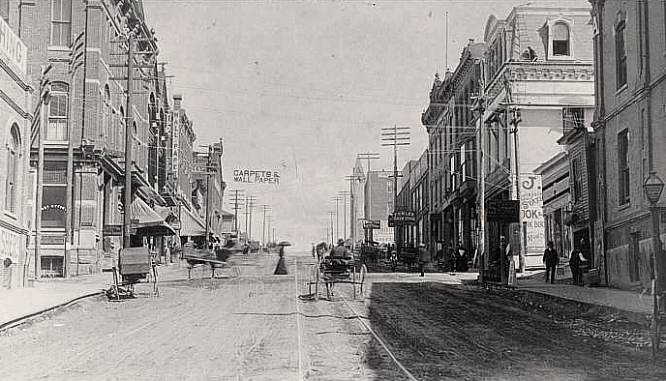
Broadway, looking
east from Main, 1890s.
|
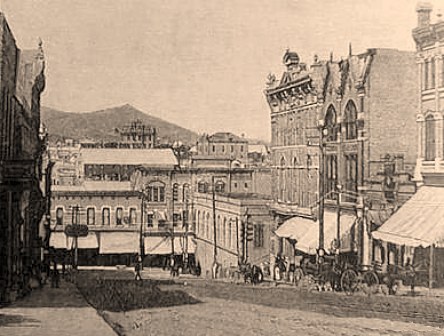
Broadway, looking
west from above Jackson St., 1888.
|

THE LEWIS AND CLARK COUNTY COURTHOUSE
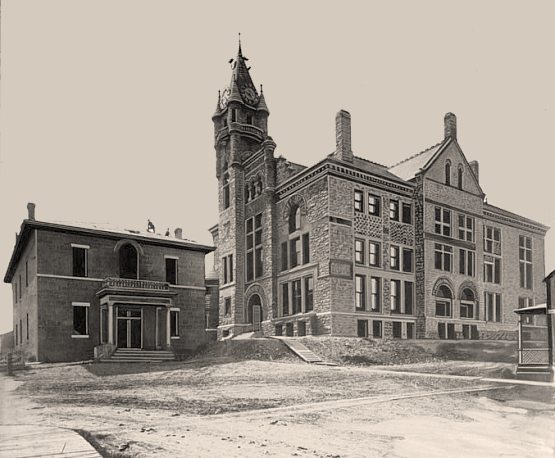
|
Two Lewis
& Clark County Courthouses, 228 Broadway,1887. This
view is looking south-east. The small building was the second
County Courthouse, which was replaced by the large new turreted
one in 1887. For a time, the new building housed all territorial
(later state) and county offices.
The small
building was demolished soon after this photo was taken. The
handsome clock tower was damaged in the 1935 earthquakes, taken
down, and not rebuilt.
|
|
|
From
the Helena Independent, Nov. 18, 1935:
The courthouse clock is no more. The "highboy"
of Helena which lifted its sad face to the four winds,
each telling a different story of the time, is to be permanently
done away with.
After fifty years of faithful service, during which time
at least one face always told the correct time, the old
clock gave up the battle and fell a prey to the earthquake
bugaboo. It was ordered removed along with all the heavy
chimneys and fancy brownstone work which constituted hazards
to the building and the public.
When the courthouse building was erected in 1885, the
crowning touch of glory to the massive stone structure,
was the tower and clock on the north face of the building
over the front door. Because of the manner in which the
building was situated in its full block of grass, flower
beds and walks and the near proximity of Broadway to the
rear, the front door was often regarded as the back and
the back door as the front and the side door on the east,
through which prisoners were brought from the courtroom
to the jail, as the door of sorrow.
Saturday morning the south face of the clock, which lifted
up its hands to the noonday sun and asked for prompt payment
of all tax obligations, was taken down by workmen who
tenderly removed it from the tower and consigned it to
the land of forgotten things. And so today the face on
the north which says 6:15 and the face on the east which
says 8:32 and the face on the west which says nothing,
will be retired from public life.
|
|
|
|
|
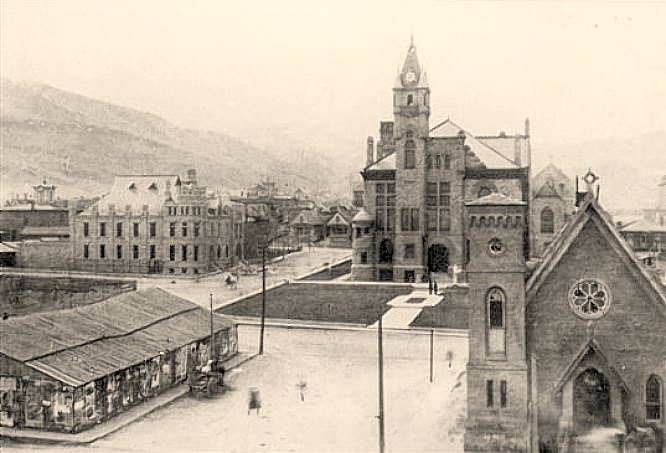
|
The Lewis
& Clark County Courthouse area, ca.1890. This beauty
is from Jeff Sherlock, who writes:
|
This
photo shows the Presbyterian Church (1875-1890) at the
corner of 5th and Ewing; this area is currently the County
Courthouse parking lot. In the background we see the just-
completed courthouse and jail. This photo must have been
taken from roof of the Chessman apts., in 1889 or 1890.
Just
over the right edge of the courthouse roof is the steeple
of the old Methodist Church on Broadway.
|
Thanks,
Jeff!
|
|
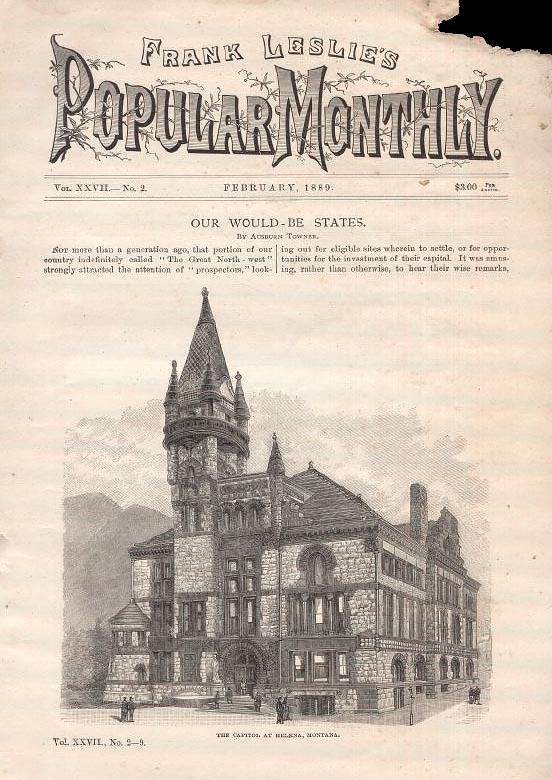
|
1889
Illustration of the courthouse when it also housed territorial
offices.
|
|
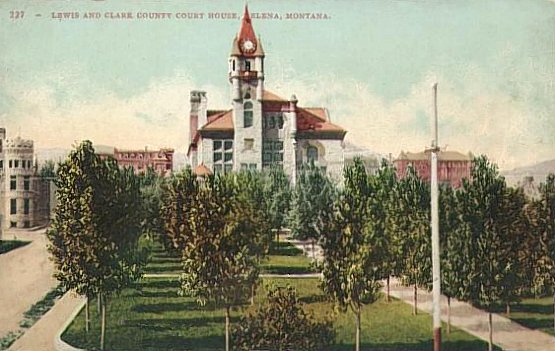
| Two postcard
views of the Courthouse, looking south. The granite
turret of the Lewis & Clark County Jail can be seen on the
left. |
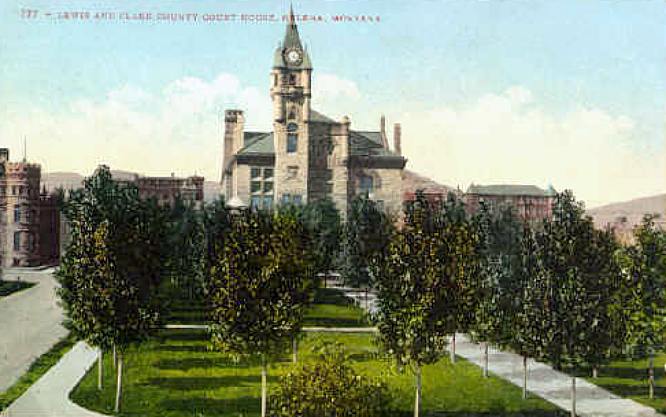
|
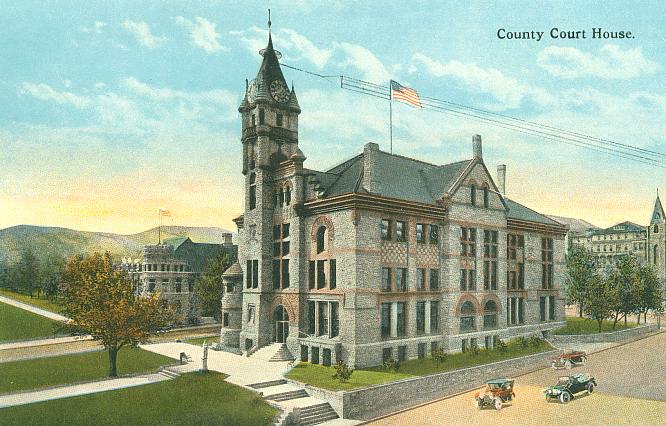
| County
Court House, looking SE, ca. 1915. Note the large radio antenna
extending from the clock tower. COLLECTION
OF KENNON BAIRD |
|
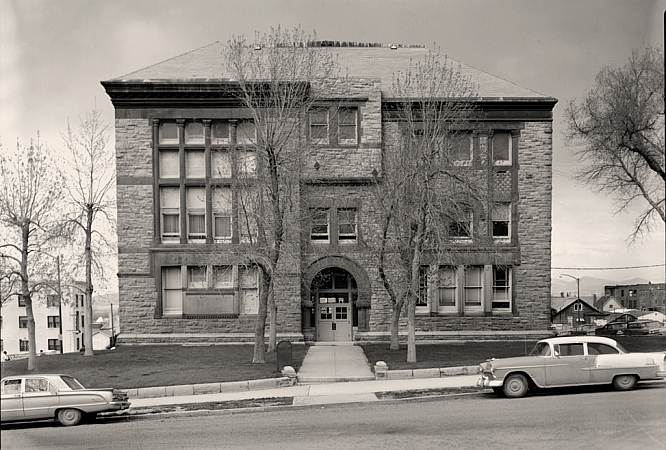
Early 1960s
view of the Lewis & Clark County Courthouse, looking north
from Broadway.

|
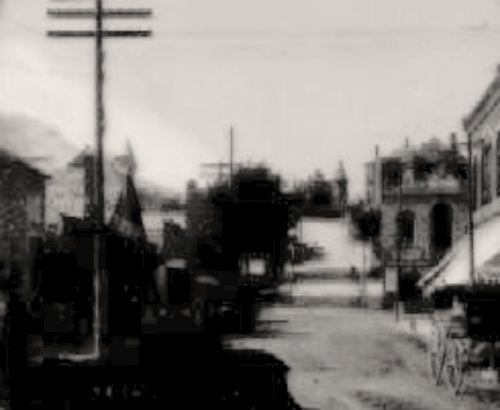
|
Edwards
St., looking west, ca. 1890. The Marlow Theatre would be
built on the left-hand side of the street in 1918. Edwards St.,
along with the Marlow, would be eliminated by Urban Renewal
in the 1970s.
|
|

THE FOIDEL UNDERTAKING
COMPANY
FIRST HOME OF THE HELENA BRANCH OF THE FEDERAL RESERVE
BANK
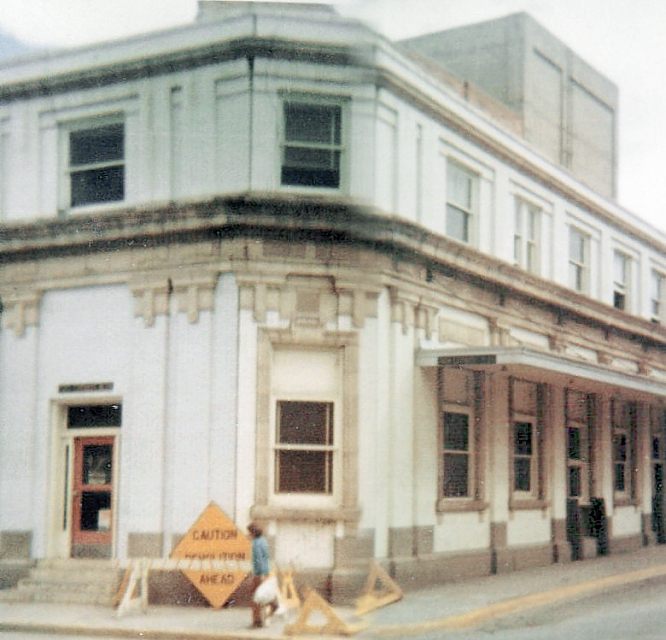
THE WES AND CAROL SYNNESS COLLECTION
|
The Foidel
Undertaking Company building, southeast corner of Park and
Edwards, 1972. The Marlow Theatre stands behind it. This
image was made by digitally stitching together two seperate
photos, which accounts for the slight blur down the center.
Built in 1905, this building became the Federal Reserve
Branch Bank in 1921. The second story was added at that
time. After the Bank moved to custom-built quarters on Park
Ave. in 1938, this building became the Union Bus Depot. The
Foidel Building was demolished in 1974. Click
here for an interesting history of the Helena Branch of
the Federal Reserve.
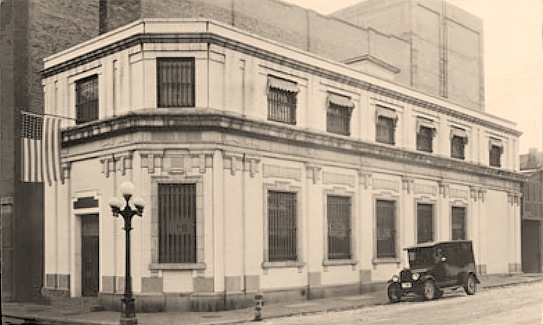
THE HELENA
BRANCH OF THE FEDERAL RESERVE, 1920s.
|

|
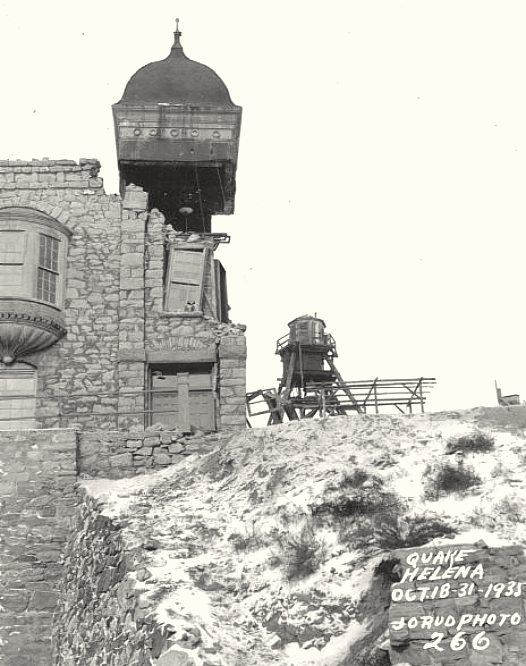
The 1889
Bluestone House after the 1935 earthquakes. The curiously-designed
building was already in disrepair before the quakes. It was restored
with Urban Renewal funds in the 1970s.
THE WES AND CAROL SYNNESS COLLECTION |
|
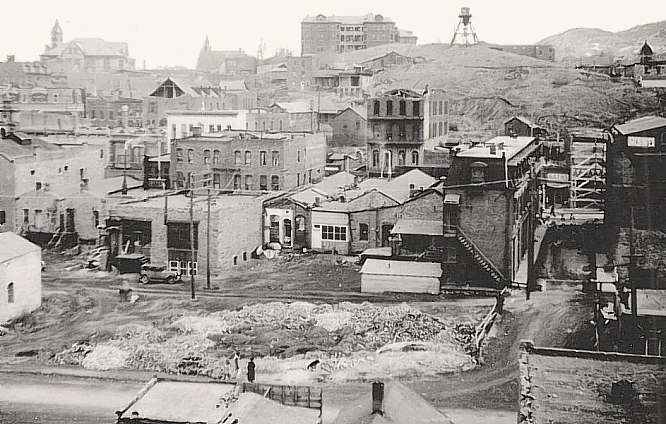
| Earthquake
cleanup on South Main, 1935, looking east from above Park
Ave. Note the piles of rubble in the foreground, and the obvious
damage to several buildings. It appears that scaffolding has been
erected across the front of a building on the right. THE
WES AND CAROL SYNNESS COLLECTION |
|
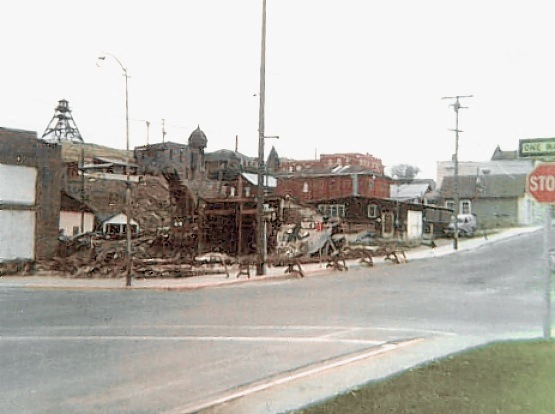
Two views of
1970s Urban Renewal Program demolition...
THE WES AND CAROL SYNNESS COLLECTION

|
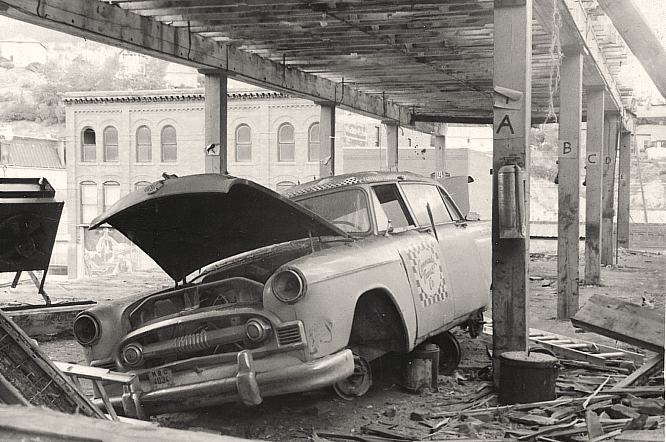
| Urban
Renewal Program in progress, 1970. A stripped 1950s Community
Transit Co. taxi inside the shell of a South Main building. COLLECTION
OF KENNON BAIRD |
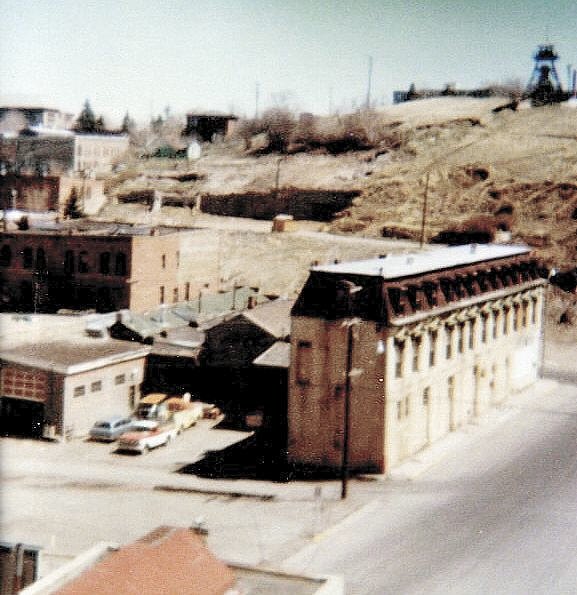
The Colwell
Building, 1972.
THE
WES AND CAROL SYNNESS COLLECTION
|
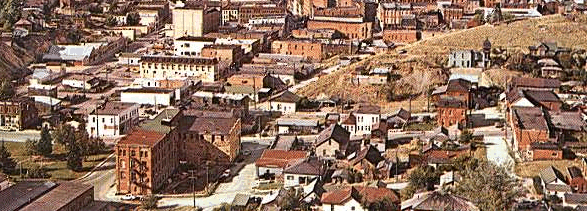
A N I M A T
I O N
| AVI animation
of the changing face of South Main, 1950s to the present. Click
the image above to download. |

|













